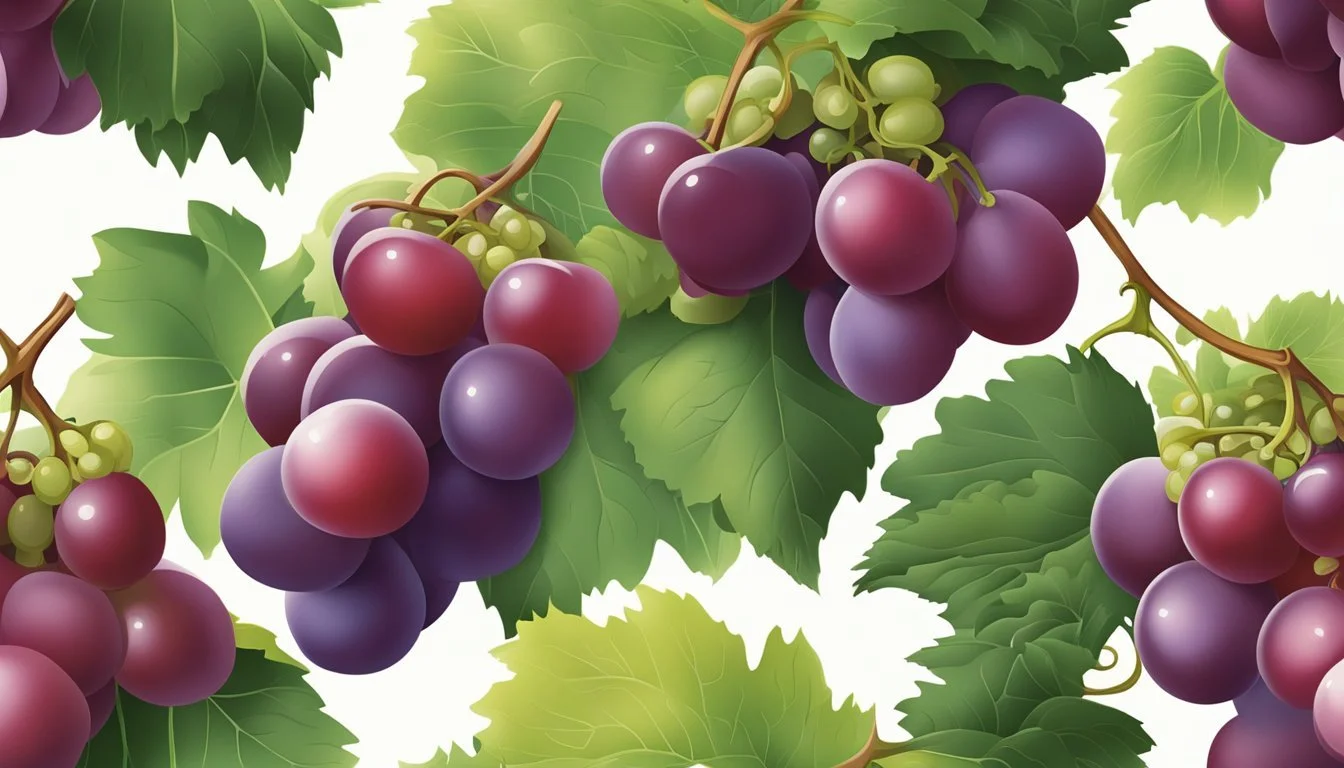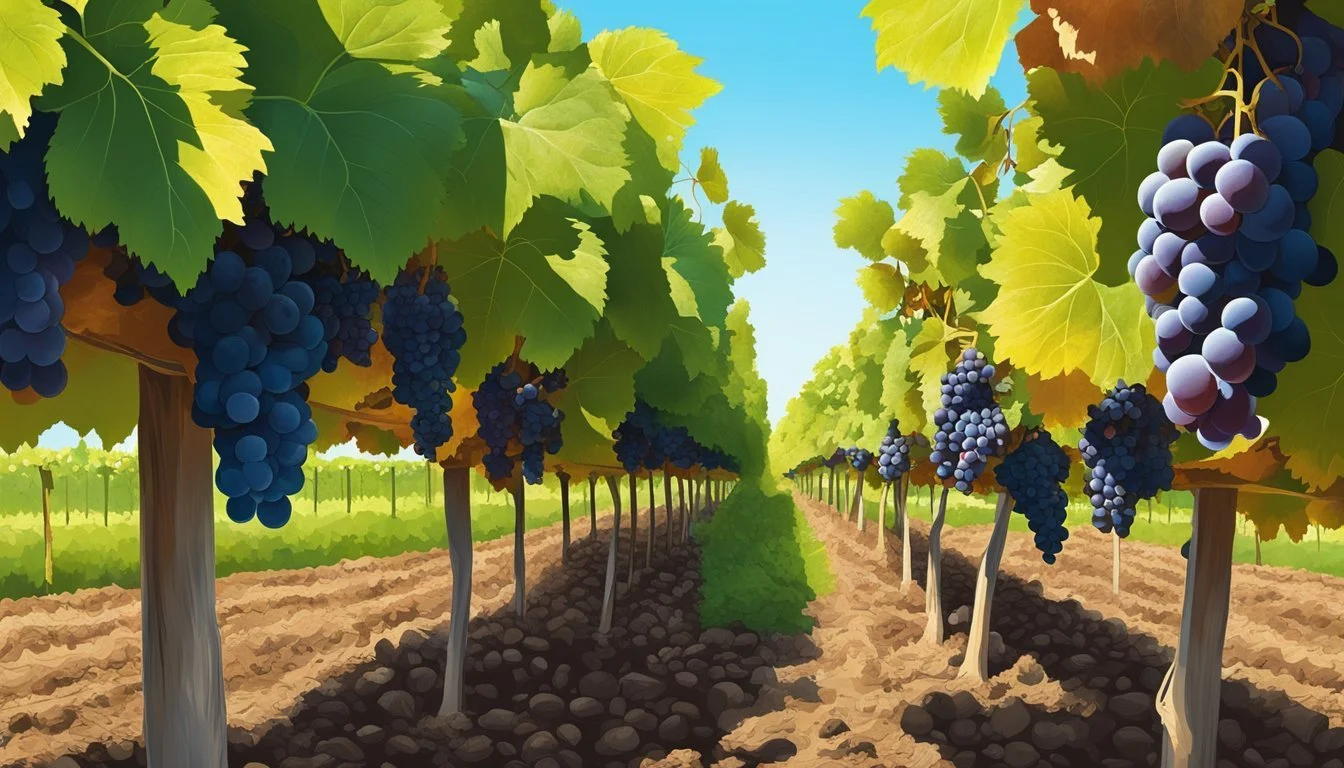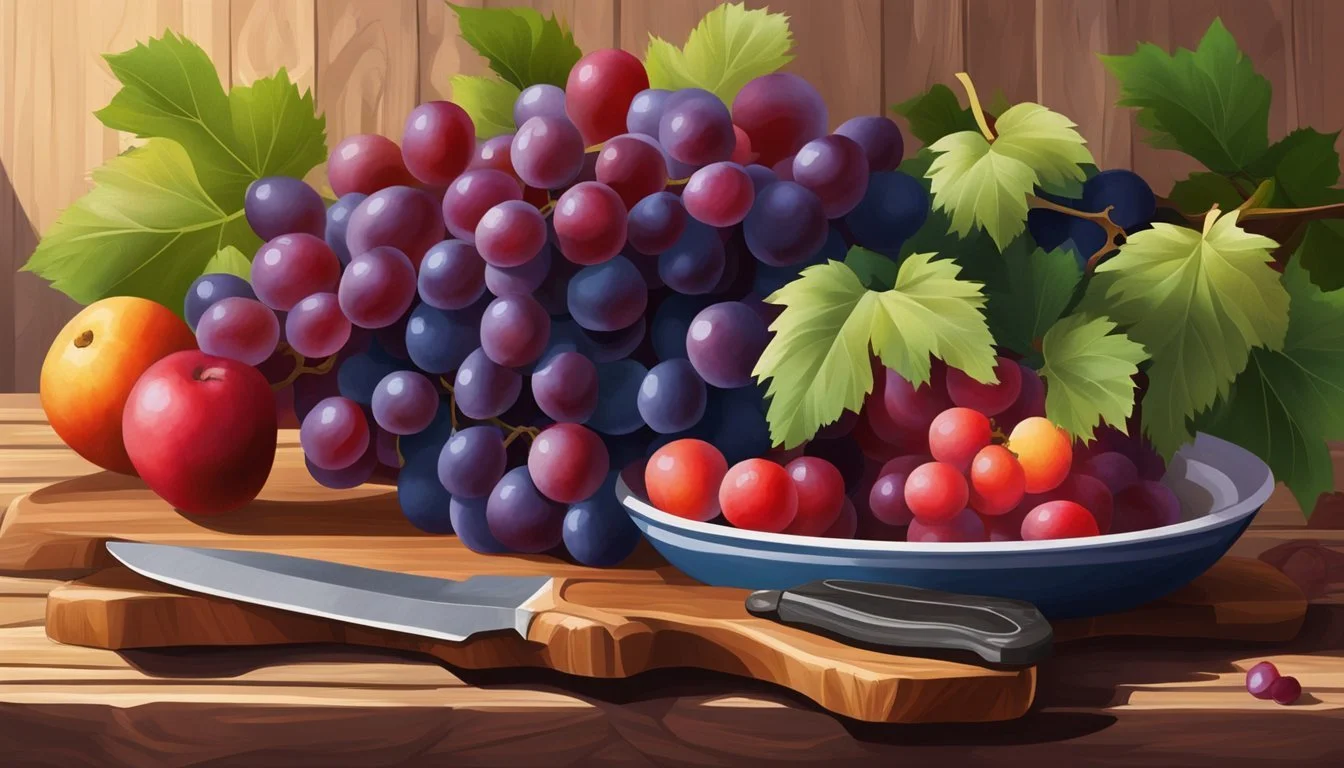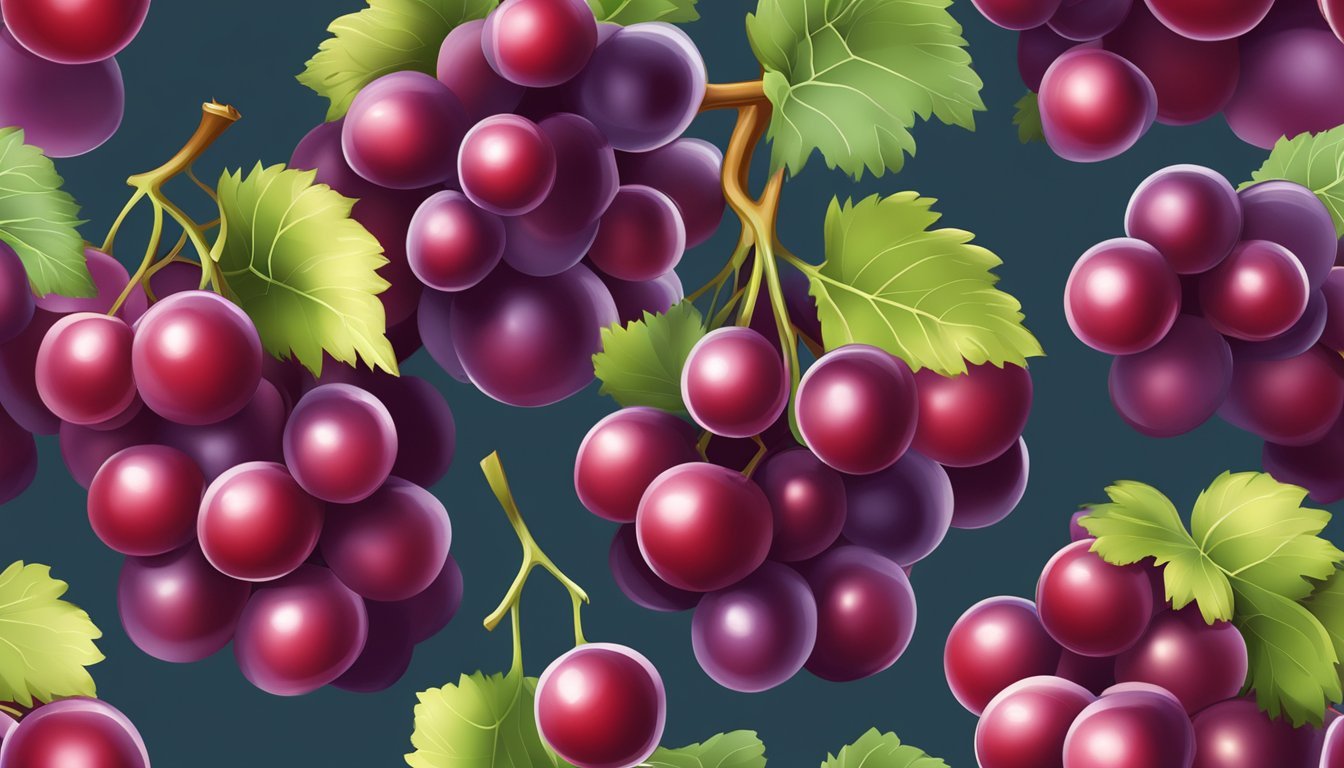How to Tell If Red Globe Grapes Are Ripe
Signs and Tips for Perfect Harvesting
Determining the perfect moment to harvest Red Globe grapes is key to enjoying their full flavor and benefits. These grapes, known for their large size and popularity as a table grape, reach the peak of their sweetness when ripe. To ensure the grapes have reached this stage, it’s important to recognize the telltale signs of ripeness. Factors such as color, texture, and flavor all play a role in identifying whether Red Globe grapes are ready to be picked.
The Red Globe grape is a specific variety that demands particular attention during the cultivation and care process to achieve the best quality fruit. The vineyard’s climate, the grape's skin firmness, and the ease with which the fruit comes off the stem are all indicative of ripeness. Observing these conditions closely can lead to a successful harvest, ensuring the grapes maintain their prized qualities from the vine to the table. Understanding when the Red Globe grape is ripe for the picking ensures that the fruit's nutritional benefits, such as its fiber content, are maximized.
Key Takeaways
Red Globe grapes are distinguished by their large size and status as a preferred table grape.
Ripeness can be assessed through visual and tactile signs, along with taste.
Properly ripe Red Globe grapes offer optimal flavor and nutritional value.
Identifying Red Globe Grape Variety
The Red Globe grape is easily recognized by its distinct size and coloration, thriving in various global regions during specific seasonal periods.
Characteristics of Red Globe Grapes
Red Globe grapes stand out due to their large spherical berries and vibrant red color. They are considered one of the largest table grape varieties, with each berry typically weighing 10 to 15 grams. The texture of the skin is firm and they contain seeds. This variety is a result of a crossbreeding between the Muscat of Alexandria and Thompson Seedless grape varieties. Recognizing a Red Globe grape involves inspecting these unique attributes:
Size: Large berries (10-15g per berry)
Texture: Firm skin
Color: Dark pink to reddish hue
Seeds: Present
Growth Regions and Seasons
Initially developed in California in the late 1950s, Red Globe grapes are now cultivated in several parts of the world including Chile, Australia, and South Africa. These grapes are typically grown in warm regions and reach full ripeness in late summer to early fall. Seasonal growth periods are essential to identify as they can vary across the different regions:
California: Late summer to early fall
Chile: Seasonality corresponds with the Southern Hemisphere
Australia: Late summer to early fall timing in line with local climate conditions
Cultivation and Care
Growing Red Globe grapes requires understanding the vine’s preferences for climate and care to ensure a bountiful harvest. Attention to detail in the cultivation process can prevent many common issues.
Optimal Conditions for Grape Vines
The key to thriving Red Globe grape vines is provision of optimal growing conditions. These vines prefer a location that receives full sunlight for the majority of the day, as sunlight is crucial for sugar development within the grapes. For soil, a deep, well-drained loam with a pH of 5.5 to 5.7 creates an ideal environment for root growth. To maximize growth and fruit production, thinning of both the shoots and grape clusters may be necessary to allow adequate sun exposure and reduce overburdening the vines.
Sunlight: Full sun (at least 6 hours per day).
Soil: Deep, well-drained loam.
pH: 5.5 to 5.7.
However, heat can be a double-edged sword; excessive temperatures can harm the vines. It's essential to ensure adequate water supply during periods of high heat to prevent stress on the grape vines.
Dealing With Pests and Diseases
Pests and diseases can significantly impact the health of grape vines. Common ailments include powdery mildew, which can be identified by a white, powdery substance on leaves and shoots. Treatment involves proper pruning to improve air circulation and the application of fungicides when necessary. Mites are another concern, and maintaining a controlled environment with natural predators can help manage their population.
Powdery Mildew: Manage with pruning and fungicides.
Mites: Encourage natural predators; use miticides as required.
Preventative care, such as regular inspection of the vines and maintaining cleanliness around the vineyard, plays a crucial role in avoiding infestations and infections. This involves removing any diseased parts of the plant immediately and providing optimal spacing between the vines for air flow.
Stages of Maturation
The maturation of Red Globe grapes entails a series of distinct stages, starting from flowering and culminating in the fruit reaching full ripeness. Certain indicators like sugar levels, berry firmness, and acidity are pivotal through these stages, providing growers with concrete measures of progression towards a succulent, ripe grape.
From Flowering to Veraison
Flowering: This initial phase begins with pollination and leads to the formation of tiny green berries. Grape clusters emerge and grow.
Veraison: This phase marks the onset of ripening with green grapes transitioning to their final color—red for Red Globe grapes. Here, sugar levels start to rise, and acidity decreases. The process generally takes place in early fall and is a key indicator of the beginning of maturation.
Sugar Increase: As veraison progresses, the sugar content within the berry increases, leading to greater sweetness.
Color Changes: The clusters visibly change from green to red.
Assessing Berry Development
Sugar Levels (Brix):
Measurement: Brix is a scale used to measure the sugar content in grapes and is critical in determining when the berries are ripe for harvesting.
Ripeness Indicator: A higher Brix reading usually indicates a riper berry with sufficient sweetness.
Maturation Signs:
Berry Firmness: A ripe Red Globe berry exhibits a balance between firmness and a slight give when gently squeezed.
Acidity: As the berry matures, the acidity lessens, complementing the sweetness.
By monitoring these attributes, farmers can determine the ideal harvest time to ensure the grapes have reached their peak in flavor and quality.
How to Tell When Grapes Are Ripe
Determining the ripeness of Red Globe grapes involves checking for specific visual cues, tactile indicators, and analyzing the grape's sugar content and flavor profile. This evaluation is critical to ensure that the berries are harvested at the ideal point for consumption or wine production.
Visual and Tactile Indicators
Color: As Red Globe grapes approach ripeness, they exhibit a deep and uniform red hue without green spots. Their color serves as a visual clue to their maturity.
Texture: A ripe grape will have firm flesh, indicating it is plump with juices. When touched, ripe Red Globe grapes should give a slight resistance. Overripe grapes, on the other hand, may feel too soft or begin to wrinkle.
Stem: Grapes ready to be picked will be attached but should detach easily with a gentle tug, whereas underripe fruit clings more stubbornly to the vine.
Sun Exposure: Proper sunlight is crucial as it contributes to the development of the grape's signature color and aids in sugar accumulation.
Flavor Profile and Sugar Content
Sugar Levels and Acidity: The balance between sugar levels and acidity is necessary for determining ripeness. Winemakers measure sugar levels using a scale called 'Brix'.
Optimal Brix for Red Globe grapes is typically between 16 and 18.
Acidity decreases as sugar levels rise; a harmonious ratio is key for deeming grapes ripe.
Taste: A ripe Red Globe grape will have a markedly sweet flavor profile. The sweetness should be evident without any sharp acidic bite that is characteristic of underripe berries.
Testing: To precisely confirm ripeness, one might taste a few berries from different clusters, ensuring they exhibit the expected sweet flavor and checking that they are not overripe, which may result in a lackluster or overly sugary taste.
Harvesting Techniques
The ideal harvest time for Red Globe grapes hinges on their ripeness and the grower's ability to utilize correct detaching methods. These ensure that the quality and flavor of grapes are preserved post-harvest.
When and How to Harvest Red Globe Grapes
Red Globe grapes typically reach harvest-readiness in late summer to early fall. Recognizing ripe berries is critical: they should be full-sized, firm, and a deep red color. One can measure sugar content using a refractometer, with ripe Red Globe grapes exhibiting a Brix level, or sugar content, of around 17 to 19 percent. The correct time to pick the grapes is usually during sunny weather, which facilitates lower moisture content on the grape skins and less likelihood of spoilage.
When detaching clusters from the vine, a careful approach is essential to avoid damaging the grapes and the vines. Tools like pruning shears or grape scissors should be employed to cleanly cut the stem close to the cluster. Here's a quick list of essential steps in harvesting:
Inspect the color and firmness of grapes.
Use a refractometer to check Brix levels.
Choose a dry, sunny day for harvesting.
Cut clusters carefully with sharp, clean tools.
Ensure gentle handling to avoid bruising.
Employing these techniques helps maintain the grapes' integrity from vineyard to storage.
Post-Harvest Handling and Storage
Once Red Globe grapes have been harvested, it's critical to manage their temperature and environment to maintain quality. Proper immediate post-harvest care and long-term storage solutions are necessary to extend the shelf life and freshness of the fruit.
Immediate Post-Harvest Care
Immediately after harvesting, Red Globe grapes should be pre-cooled to a temperature range of -1.0 to 0.0°C (30-32°F) to prevent spoilage and prolong quality. Refrigeration is key at this stage, with a careful approach to prevent freezing damage, particularly in less mature grapes. The grapes can be lightly wrapped in plastic wrap to retain humidity and reduce dehydration.
Pre-cool to -1.0 to 0.0°C (30-32°F)
Avoid temperatures below -3.0°C (26°F) to prevent berry damage
Use plastic wrap to maintain humidity
Long-Term Storage Solutions
For extended storage, maintaining a controlled environment is crucial. Red Globe grapes have shown good potential for long-term storage, especially when protected from fungal rots. Controlled cold storage can preserve the grapes for several months. The storage facility must ensure consistent temperature and appropriate humidity levels to prevent the grapes from drying out and becoming unpalatable.
Store in a consistent, cold environment
Monitor for fungal rots and use preventative measures
Maintain humidity levels to protect against dehydration
Utilizing Red Globe Grapes in Cuisine
Red Globe grapes, known for their sweet flavor and large size, are not only a fresh snack but also versatile in various recipes. Their juicy texture and ability to maintain shape make them suitable for both sweet and savory dishes.
Desserts and Sweet Treats
In the realm of desserts, Red Globe grapes make a delightful addition. They can be incorporated into baked goods such as cakes and pies, often halved and added to batter or filling. Their sweetness complements the savory crust and rich cream. Additionally, these grapes are a staple in fruit salads, served alongside other fresh fruits. For a simple yet elegant treat, they can be dipped in chocolate and chilled until set, creating an indulgent dessert option.
Savory Pairings and Salads
Red Globe grapes thrive in savory combinations as well. They can be sliced and added to salads for a burst of sweetness that contrasts with bitter greens or tangy dressings. Incorporating Red Globe grapes into chicken or tuna salad not only adds texture but also a fruity zest. These grapes pair well with cheese, making them a fine addition to a charcuterie board, specifically complementing strong flavors like blue cheese or gouda.
Smoothies and Health-Conscious Recipes
For those striving for healthier options, Red Globe grapes are beneficial due to their high content of antioxidants and potassium. These nutritional attributes can aid in the prevention of conditions like cancer and support overall health. When used in smoothies, the natural sweetness of Red Globe grapes reduces the need for added sugars. By blending them with other fruits, leafy greens, and a liquid base, one can create a refreshing drink brimming with health benefits.
Nutritional Information
Red Globe grapes not only offer a sweet, juicy burst of flavor but also bring a host of nutritional benefits. They are particularly known for their fiber content, aiding in digestive health and potentially helping with weight control due to the feeling of fullness fiber offers.
One standout mineral in Red Globe grapes is potassium, essential for maintaining healthy blood pressure levels and overall heart health. A typical serving size of grapes, which is about one cup or 151 grams, contains approximately 93.6 milligrams of potassium.
When considering antioxidants, Red Globe grapes are a valued source. Antioxidants are compounds that can protect the body from oxidative stress and may lower the risk of chronic diseases. These grapes contain a variety of antioxidant compounds, including vitamin C and vitamin K. Vitamin C supports the immune system, and just one serving provides about 5 milligrams. Vitamin K is crucial for blood clotting and bone health, with a serving offering around 22 micrograms.
Health benefits of these nutrients are manifold, extending beyond the essential vitamins and minerals. Regular consumption of Red Globe grapes can contribute to one's overall nutrition and wellness by providing these key nutrients.
Nutrient: Potassium
Amount per serving: 93.6 mg
% Daily Value (DV): 2%
Nutrient: Fiber
Amount per serving: Approx. 1 gram
% Daily Value (DV): -
Nutrient: Vitamin C
Amount per serving: 5 mg
% Daily Value (DV): 6%
Nutrient: Vitamin K
Amount per serving: 22 µg
% Daily Value (DV): 18%
*Note: %DV are based on a 2,000-calorie diet.
It's important to point out that these values can vary based on the exact size and quantity of grapes consumed. Nonetheless, Red Globe grapes remain a nutritious choice for those looking to enrich their diet.





